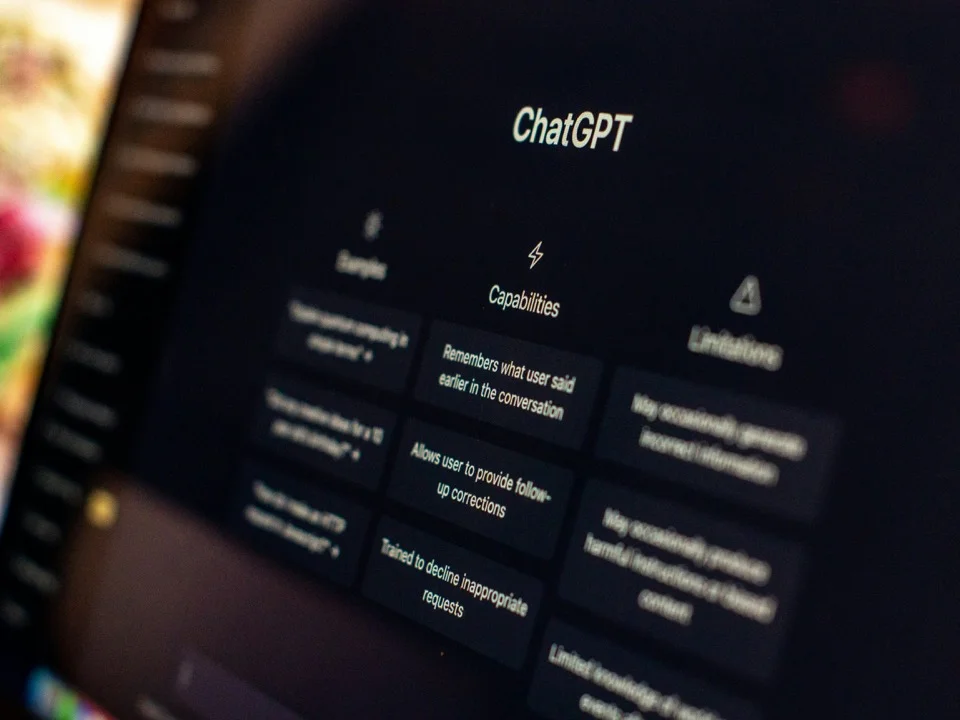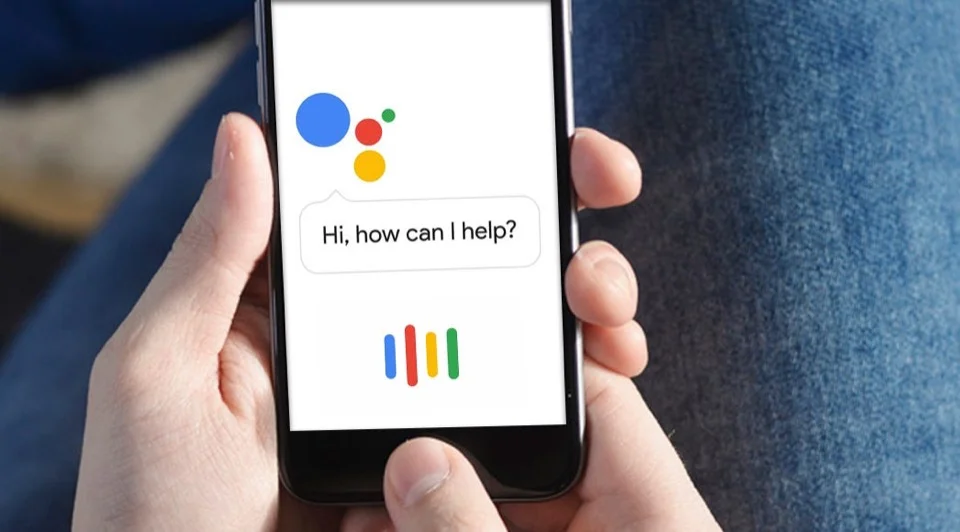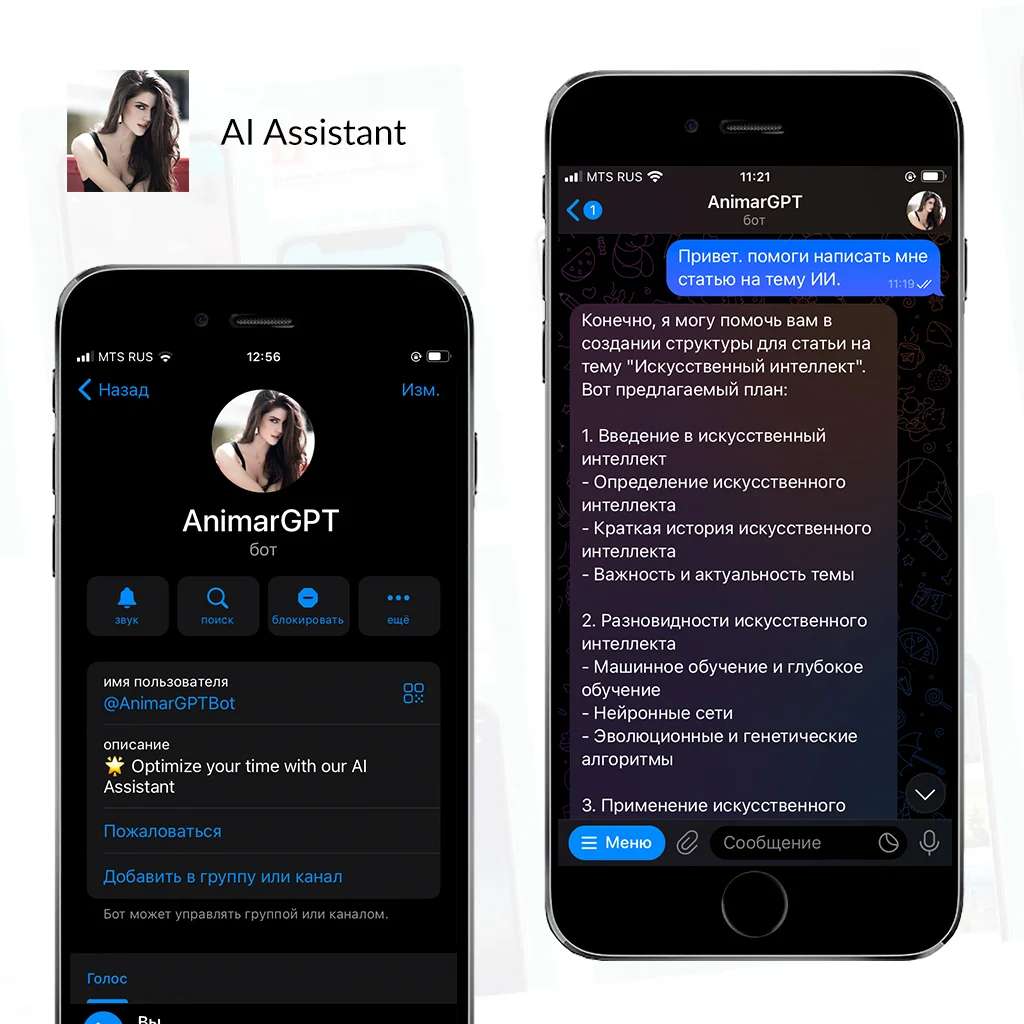What is Ai Virtual Assistant?
Discover the transformative power of AI Virtual Assistants and how they’re revolutionizing business efficiency. Explore types, capabilities, and how Scrile’s custom solutions can elevate your operational success.

Introduction
In today’s fast-paced world, the quest for efficiency and productivity has led to the emergence of a revolutionary tool: the AI virtual assistant. These advanced digital companions, powered by cutting-edge artificial intelligence (AI) technologies, are redefining the way we manage our daily tasks, from scheduling meetings to controlling smart home devices. With the ability to understand natural language processing (NLP) and execute voice commands, AI virtual assistants are becoming an indispensable part of both personal and professional lives.
The evolution of AI technology, including machine learning (ML) and speech recognition, has enabled these virtual assistants to offer personalized and intuitive assistance.
Whether it’s through messaging apps on our smartphones or smart speakers in our homes, AI assistants are always ready to help with a wide range of tasks. Their capabilities extend beyond simple administrative tasks, encompassing complex tasks like managing personal finances and enhancing productivity across various platforms.
As we delve into the world of AI assistants, it’s essential to recognize the role of companies like Scrile, which stand at the forefront of integrating AI solutions into business models. Scrile’s expertise in developing custom AI tools and assistant technology offers businesses a competitive edge, transforming the digital workspace with intelligent virtual assistants tailored to meet specific needs.
What is a Virtual Assistant?
A virtual assistant, at its core, is a digital assistant designed to perform specific tasks and services for an individual or a business. Leveraging artificial intelligence, these virtual helpers are more than mere computer programs; they are intelligent entities equipped with natural language understanding and the ability to process user input in a way that mimics human interaction.
Evolution from Digital to AI-Powered Assistants
Initially, virtual assistants were simple, rule-based systems that could execute only a limited set of predefined tasks.
However, with advancements in AI technology, particularly in areas like natural language generation and automatic speech recognition, virtual assistants have transformed into AI-powered entities capable of learning from user interactions.
This evolution has enabled them to provide human-like responses, making them more relatable and effective as personal and executive assistants.
Key Features of Modern AI Virtual Assistant
Today’s AI virtual assistant boasts a range of key features that set them apart from their predecessors:
Natural Language Processing (NLP): Allows virtual assistants to understand and interpret human language, enabling users to interact with them through voice or text in a natural and intuitive manner.
Machine Learning (ML): Enables AI assistants to learn from user interactions, improving their responses and personalizing the experience over time.
Voice and Text Recognition: Advanced AI technologies empower virtual assistants to accurately process voice commands and messages, facilitating seamless interaction across various devices and platforms.
Multitasking Abilities: Unlike traditional assistants, AI-powered virtual assistants can handle multiple tasks simultaneously, from scheduling appointments to controlling smart devices, enhancing productivity and efficiency.
How Does an AI Assistant Work?

The inner workings of an AI virtual assistant are a testament to the remarkable advancements in artificial intelligence and technology. At the core of these intelligent systems are sophisticated algorithms and computational processes, primarily driven by Natural Language Processing (NLP), Machine Learning (ML), and a suite of AI algorithms.
Together, these technologies enable virtual assistants to understand, learn from, and respond to human interactions in a way that was once the realm of science fiction.
The Role of Natural Language Processing (NLP)
Natural Language Processing, or NLP, is the cornerstone of how AI assistants understand and interpret human language. This technology allows virtual assistants, such as Google Assistant or other AI virtual assistant apps, to break down and analyze the user’s speech or text input. By dissecting sentences into their constituent parts and understanding the context, NLP enables these assistants to comprehend user queries in a way that mirrors human understanding.
For instance, when a user issues voice commands like “Schedule a meeting for tomorrow at 9 AM,” the AI assistant uses NLP to parse the sentence structure, identify key elements (such as the task of scheduling a meeting and the specified time), and understand the user’s intent. This level of comprehension is crucial for the assistant to execute the command accurately and efficiently.
Machine Learning and AI Algorithms
While NLP provides the basis for understanding, it is Machine Learning (ML) and other AI algorithms that empower virtual assistants to learn from each interaction and improve over time. ML algorithms analyze past interactions and user behaviors to tailor responses and predict future needs. This adaptive learning process is what makes AI assistants increasingly personalized and effective with each use.
For example, if a user frequently schedules meetings in the morning, the AI assistant can learn this pattern and start to suggest morning times when the user mentions scheduling a new meeting. This predictive capability, powered by ML, transforms virtual assistants from reactive tools into proactive helpers that can anticipate the user’s needs.
Interpreting and Responding to User Commands
The true magic of AI assistants lies in their ability to turn understanding and learning into action. Once the AI assistant has interpreted a user’s command through NLP and contextualized it with ML, it then proceeds to execute the command or provide the requested information. This process involves a seamless integration of various AI tools and technologies, ensuring that the assistant can handle a wide range of requests, from managing personal finances to controlling smart home devices.
For instance, when a user asks their virtual assistant to “turn off the kitchen lights,” the assistant not only understands the command through NLP but also knows, through ML, which lights the user is referring to based on past commands. It then sends the appropriate signal to the smart home control system to turn off the lights, all within a matter of seconds.
In conclusion, the operation of AI assistants is a sophisticated dance of natural language processing, ML, and AI algorithms, all working in harmony to provide users with an intuitive and helpful experience. As AI technology continues to evolve, so too will the capabilities and efficiency of AI virtual assistant, making them an increasingly integral part of our digital lives.
Capabilities of Virtual Assistants

AI virtual assistants have transcended the realm of simple tasks to become comprehensive aids in both personal and professional settings. Their capabilities, powered by advanced text and speech recognition technologies, allow them to perform a wide array of functions that streamline daily activities and enhance productivity. Here’s a detailed list of tasks that AI assistants can adeptly handle:
Task Management: They can add, organize, and prioritize tasks in a calendar, aiding in efficient project management and ensuring that no deadline is missed.
Information Retrieval: Virtual assistants provide quick answers to queries that would typically require a web search, thereby saving time and enhancing productivity.
Smart Home Control: With voice interaction, they can control and monitor the status of smart home devices, such as lights, cameras, and thermostats, ensuring comfort and security.
Communication: They facilitate making and receiving phone calls, creating and sending text messages, and managing other forms of communication, making staying connected easier than ever.
Scheduling and Reminders: Assistants excel in helping schedule appointments, setting task reminders, and ensuring you’re always prepared for upcoming events and deadlines.
Navigation: They provide directions and location-based services, helping you navigate to new places or find local amenities like hotels or restaurants.
Updates and Reports: Stay informed with the latest news, weather reports, and other essential updates, all delivered verbally for your convenience.
Entertainment and Leisure: Whether it’s streaming podcasts, playing music, or engaging in games, AI assistants can entertain you and help relax after a long day.
Personal Assistance: From checking flight reservations to calling a ride service like Uber or Lyft, they make personal logistics smoother and more manageable.
Learning and Development: They support e-learning and training initiatives by providing educational content and assisting with workflow management.
Types of Virtual Assistants

The landscape of AI assistants is diverse, with each type designed to cater to different needs and preferences. From simple AI chatbots to more sophisticated intelligent virtual assistants, the variety available ensures that there is a solution for every scenario. Here’s a breakdown of the different types of AI assistants:
AI Chatbots
AI chatbots are the most basic form of virtual assistants, primarily designed for text-based interaction. They are commonly found on websites and social media platforms, providing customer support and answering frequently asked questions.
These chatbots utilize AI to understand and respond to user queries, making them a valuable asset for businesses looking to automate their customer service. However, unlike other virtual assistants, AI chatbots are limited in their capabilities and are best suited for handling straightforward, repetitive tasks.
Use Case: A retail company uses an AI chatbot on its website to address common customer inquiries about shipping times and return policies, thereby reducing the workload on human customer service representatives.
Conversational Agents
Conversational agents represent a step up from AI chatbots, offering a more dynamic and interactive form of assistance. These agents are capable of engaging in more natural and fluid conversations with users, thanks to advanced NLP and AI technologies.
They can interpret voice commands and text inputs, making them more versatile than chatbots. Conversational agents are often integrated into messaging apps and voice assistants, providing users with a more engaging and personalized experience.
Use Case: A conversational agent in a banking app helps users manage their accounts, transfer money, and find information about different financial services through simple voice commands or text messages.
Comprehensive AI Assistants
At the top of the virtual assistant hierarchy are comprehensive AI assistants, which offer the most advanced and wide-ranging capabilities.
These assistants, such as Google Assistant, are integrated into multiple devices and platforms, allowing users to perform a variety of tasks, from scheduling appointments to controlling smart devices. They understand complex voice commands, learn from user interactions, and provide personalized responses, making them the epitome of intelligent virtual assistant technology.
Use Case: A user employs Google Assistant to organize their daily schedule, control smart home appliances, get traffic updates for their commute, and even make restaurant reservations, all through simple commands.
Each type of AI assistant has its unique features and use cases, making them suitable for different tasks and user needs. Whether it’s through basic text interactions or complex voice commands, these assistants are designed to enhance efficiency and make life easier for their users.
Best AI Virtual Assistants

The realm of AI virtual assistants is vast, with numerous options available to cater to different preferences and needs. Here’s a concise list of some of the best AI assistants currently dominating the market:
Google Assistant
Renowned for its superior voice recognition and integration capabilities, Google Assistant helps users manage their daily tasks, control home devices, and access a wealth of information, all through intuitive voice commands.
Amazon Alexa
A leader among voice assistants, Alexa excels in home control, providing entertainment, and offering personalized assistance through its extensive range of “skills.”
Apple’s Siri
Integrated across all Apple devices, Siri offers seamless assistance with scheduling, messaging, and information retrieval, all while learning from user interactions to provide a tailored experience.
Microsoft Cortana
Though primarily focused on productivity, Cortana assists with calendar management, email, and provides insights directly linked to the Windows operating system and Microsoft’s suite of products.
Samsung Bixby
Designed to offer a more personalized experience, Bixby adapts to users’ habits and preferences, assisting with mobile device navigation, settings adjustments, and daily task management.
IBM Watson Assistant
Best known for its enterprise solutions, Watson Assistant offers sophisticated AI capabilities for businesses, providing customers with personalized and intuitive support.
Zoom.ai Meeting Assistant
Specifically designed to enhance workplace productivity, this AI meeting assistant automates scheduling, sends reminders, and prepares meeting briefs, making it an invaluable tool for professionals.
Each of these AI virtual assistants comes with its unique set of features and strengths, making them the best AI options in the market for various tasks and user requirements.
Whether you need help with personal tasks or professional scheduling, there’s an AI assistant out there to enhance your daily life and productivity.
Integrating AI Virtual Assistants in Business

In the dynamic world of AI technology, Scrile emerges as a trusted partner, offering innovative solutions for integrating AI virtual assistants into business models.
Scrile’s approach to AI integration combines state-of-the-art technology with a user-centric design, ensuring that each AI assistant is not only technologically advanced but also intuitive and seamlessly integrated into existing business workflows.
Benefits of Choosing Scrile:
Fast Time to Market: Scrile’s streamlined development process ensures that your AI assistant is up and running quickly, reducing the time from concept to deployment.
Low Initial Investment: With Scrile, businesses can develop AI virtual assistants without the hefty upfront costs typically associated with custom development, making it an economical choice for companies of all sizes.
Scalability: As your business grows, Scrile’s AI solutions grow with you. They are designed to scale, ensuring that your AI assistant can handle an increasing number of tasks and users.
Customization: Scrile offers tailored solutions that meet the unique needs of your business, whether it’s for managing routine queries, answering questions, or providing customer support.
Building Your Own AI Assistant with Scrile

Creating a custom virtual assistant with Scrile is a straightforward process, designed to meet the specific needs of your business. Here’s how Scrile can guide you through the development of your own AI assistant:
Step-by-Step Guide:
Consultation and Planning: Begin with a detailed consultation to outline your business needs and objectives. Scrile’s team uses this information to plan a personalized AI assistant solution.
Design and Development: Leveraging over two decades of software development experience, Scrile designs and develops your AI assistant, focusing on key features and essential skills that align with your business goals.
Integration and Testing: Once developed, your AI assistant is integrated into your existing systems and rigorously tested to ensure seamless functionality and user experience.
Launch and Support: With Scrile’s ongoing support, your AI assistant is launched and continuously improved based on user feedback and evolving business needs.
Scrile’s portfolio includes numerous successful AI assistant implementations. For instance, businesses have utilized Scrile-developed voice assistants for executive support, managing administrative tasks, and enhancing customer service, all resulting in increased efficiency and customer satisfaction.
By choosing Scrile, businesses can harness the power of AI to develop personal and executive assistants capable of performing various tasks, from setting reminders and answering questions to handling more complex, routine tasks with human-like responses. This not only improves operational efficiency but also enhances the overall customer experience.
Final Thoughts
In the rapidly advancing digital age, the role of the virtual assistant has become increasingly pivotal. From Google Assistant to other sophisticated voice assistants, these AI-powered tools are revolutionizing the way we interact with technology, streamlining our daily tasks, and enhancing our overall productivity.
The integration of virtual assistants into both personal and professional spheres has not only simplified routine tasks but also provided a level of convenience and efficiency previously unattainable.
As we continue to navigate through this era of digital transformation, the importance of adopting these innovative solutions cannot be overstated. Voice assistants, in particular, have emerged as a cornerstone of modern technology, offering intuitive, user-friendly interfaces that cater to our evolving needs. Whether it’s scheduling appointments, managing emails, or accessing real-time information, these intelligent systems are there to assist every step of the way.
In conclusion, the future of personal and business efficiency lies in the hands of virtual assistant technology. As tools like Google Assistant become more integrated into our daily lives, we can anticipate a future where our interactions with technology are more natural, intuitive, and productive than ever before. Embracing these advancements is not just a step towards modernization; it’s a leap towards creating a more organized, manageable, and efficient reality.
Read also
AI Personal Assistant: Enhancing Productivity
Discover how AI personal assistants can enhance your productivity, offering features like task management, scheduling, and personalized recommendations.
How to Create an AI Assistant: A Step-by-Step Guide
Learn how to create an AI assistant with this step-by-step guide, covering everything from design and development to deployment and optimization.
Character AI Alternatives with No NSFW Filter or Censorship
Find alternatives to Character AI that do not have NSFW filters or censorship, allowing for unrestricted creative expression.
Best AI Avatar Generators: Top Picks Reviewed
Discover the best AI avatar generators, comparing features, user experiences, and customization options to help you choose the right one.
OnlyFans vs. Patreon: Which Is Better?
Compare OnlyFans and Patreon to determine which platform is better for your content creation needs, including features, pricing, and user experience.
